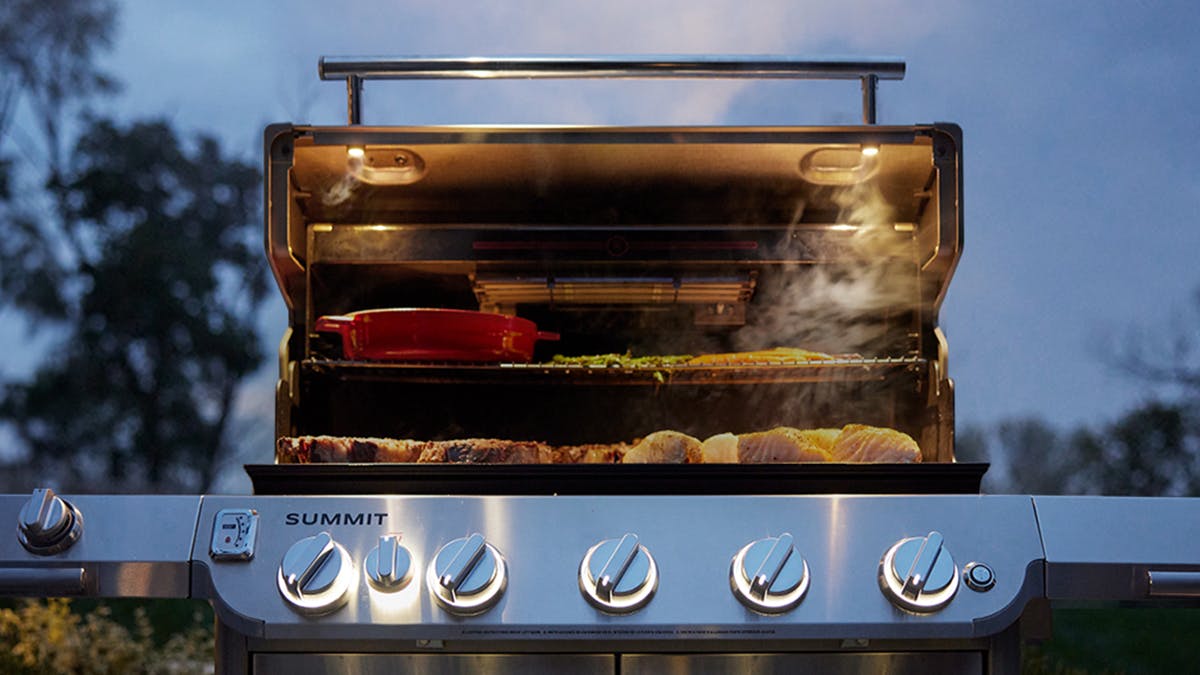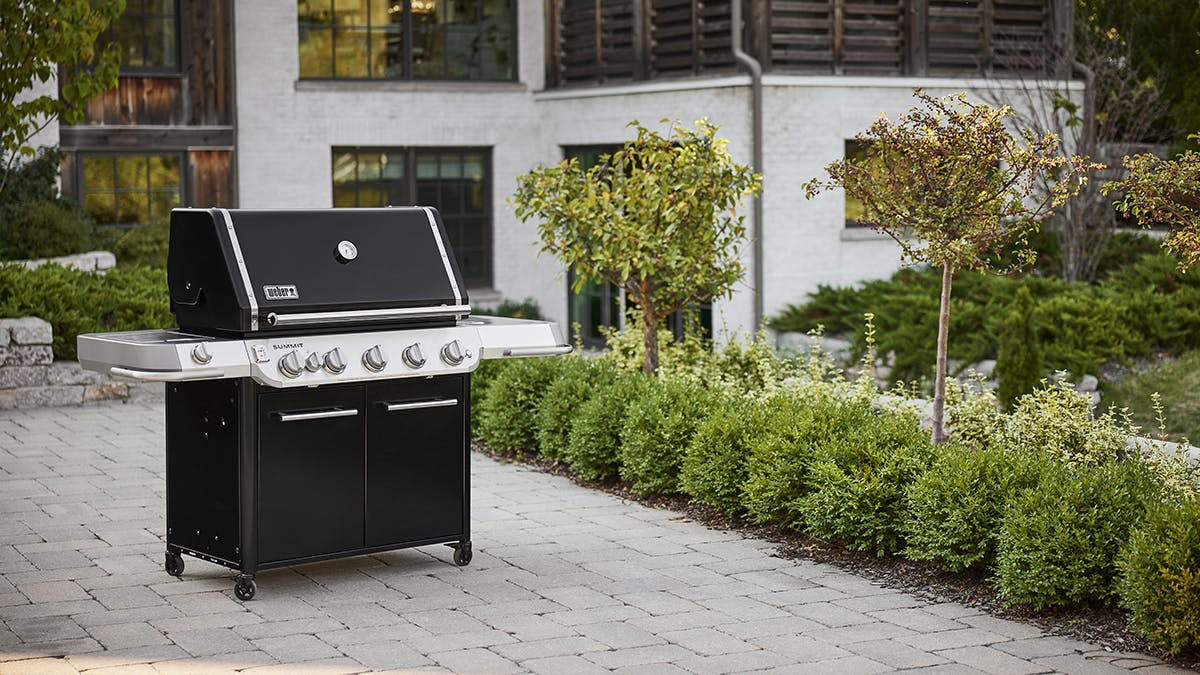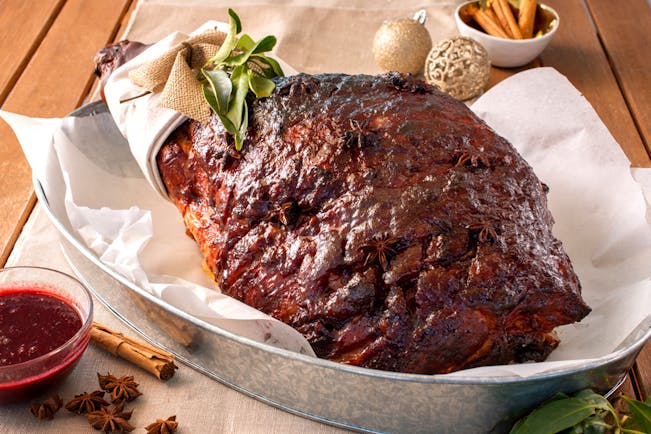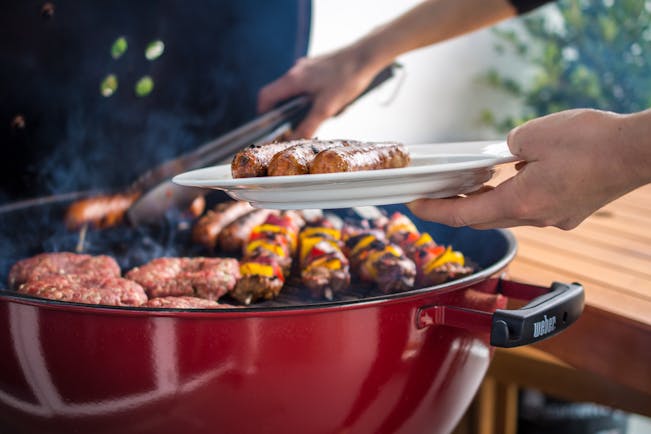Boxing Day Sale - 15% off selected BBQs*
Keep your Weber Summit shiningthe ultimate cleaning and maintenance guide
To get the best performance from your Weber Summit barbecue, a little regular cleaning and maintenance go a long way. Not only will this keep things running smoothly and looking great, but it’ll also ensure that every meal you make is as good as the last. It’s recommended to give it a thorough cleaning at least twice a year—or quarterly if you’re using it a lot. Here’s how to get it done, top to bottom.

Inside the barbecue: start from the top down
To ensure your Summit is running in perfect condition, some simple regular maintenance is a good idea. The easiest type is to keep everything clean. To do this, make sure the barbecue is off and cool, then start with the lid and work your way down.
Lid and upper cooking surfaces: don’t be flaky!
Over time, you might see flakes on the inside of the lid that look like peeling paint. Don’t worry; it’s just grease and smoke residue turning to carbon and peeling. These flakes are harmless, but to prevent them from falling onto your food, it’s best to keep them cleared out. Use a stainless steel bristle brush to remove this buildup, and for lighter maintenance, give the lid a quick wipe with a paper towel while it’s warm (but not hot).
Pro tip: Avoid brushing the ceramic surface of the infrared burner—it’s delicate and doesn’t need heavy-duty cleaning.
Cooking grills: keep it clean, keep it non-stick
Clean cooking grills mean perfectly seared food and less sticking. With regular cleaning, you won’t have to spend much time on this step. While the grills are in place, brush off any food particles using a stainless steel bristle brush. Take out the grills for a quick wipe if needed and set them aside until you’re done with the full clean.
Flavorizer Bars: where the magic happens
Your Flavorizer Bars add delicious smoky flavour to your food by catching drippings that sizzle. The bars also funnel excess drippings away, helping to prevent flare-ups. To keep things tasting great and to avoid flare-ups, these bars need occasional attention. Start by scraping them with a plastic scraper to remove any buildup and brush them with a stainless steel bristle brush if necessary. You can set them aside while cleaning the other internal parts.
Burners: the heart of your barbecue
Keeping the burners clear is crucial for both safety and performance. Two parts to focus on are the burner ports (small openings) and the spider screens (on the ends).
- Burner Ports: Brush gently across (not along) the ports using a stainless steel brush. Be mindful of the ignition electrode—brush around it carefully to avoid damage.
- Spider Screens: The screens are on the ends of the burners, near the valves, underneath the control panel. Use a soft brush to clear them of any debris.
Heat deflectors: even heat, every meal
Heat deflectors sit below the burners and help distribute heat evenly. Use a plastic scraper to clean off any residue, then, if needed, brush them with a stainless steel brush. Once clean, set the heat deflectors aside while you finish the interior cleaning.
The cookbox: catch all the leftovers
The cookbox can accumulate grease and food particles, which can lead to flare-ups if not cleaned regularly. Use a plastic scraper to clear debris from the sides and bottom of the cookbox, pushing it toward the opening at the base. This directs debris into the slide-out grease tray, which you can empty when done.
Grease management system: easy and essential
The grease management system includes an angled slide-out grease tray and a catch pan, both designed for easy cleaning—just empty and clean both components to prevent flare-ups. This step is quick but essential every time you barbecue.
Exterior cleaning for a shiny finish
Your barbecue’s exterior includes stainless steel, porcelain-enamel, and plastic surfaces, each requiring a different touch:
Stainless steel: Use a non-toxic, non-abrasive stainless steel cleaner with a microfibre cloth, working in the direction of the grain. Avoid abrasive pastes, as they can damage the finish.
Painted, porcelain-enamel, and plastic: Clean with warm, soapy water, and a cloth or paper towel, then rinse and dry thoroughly.
If your barbecue is near salt water, pool chemicals, or harsh conditions, clean more frequently and consider a weekly stainless steel polish to prevent rust.
Inside the cabinet: stay clean, stay organised
Use a soft, damp cloth to wipe the inside of the cabinet, but be careful to avoid tugging on any wires around electronic components.
Battery replacement for control knob lights and gas gauge
Open the battery door inside the cabinet on the bottom right side and replace the six D batteries with fresh ones. Remove batteries if you plan to store your barbecue for a month or more.
Important note:
Always steer clear of using a garden hose or pressure cleaner on your barbecue—water can damage the electronic components. Instead, stick to the simple cleaning tips above to keep everything in great shape.
Final thoughts
A clean Weber Summit barbecue isn’t just better for cooking; it’s safer and helps your barbecue stay in top shape for years to come. With a few easy steps and regular upkeep, your barbecue will be ready to fire up anytime you are.



